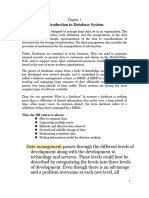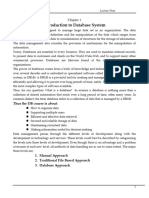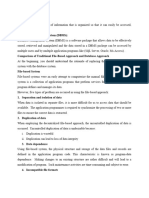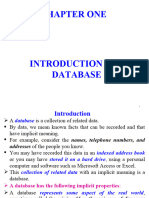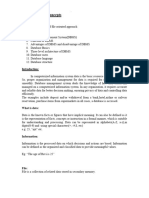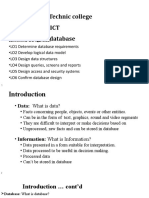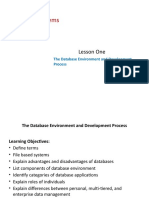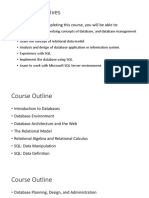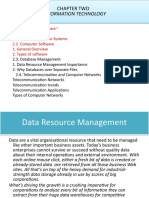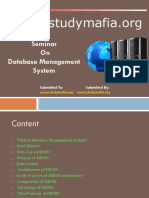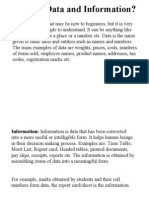0% found this document useful (0 votes)
20 views30 pagesChapter 1
The document provides an introduction to database systems, explaining their importance in managing large datasets within organizations and the role of Database Management Systems (DBMS). It outlines the evolution of data management approaches, highlighting the limitations of manual and traditional file-based systems compared to the benefits of a database approach. Additionally, it details the database development life cycle, roles in database design and use, and the functionalities of a DBMS.
Uploaded by
ambachewm27Copyright
© © All Rights Reserved
We take content rights seriously. If you suspect this is your content, claim it here.
Available Formats
Download as PPTX, PDF, TXT or read online on Scribd
0% found this document useful (0 votes)
20 views30 pagesChapter 1
The document provides an introduction to database systems, explaining their importance in managing large datasets within organizations and the role of Database Management Systems (DBMS). It outlines the evolution of data management approaches, highlighting the limitations of manual and traditional file-based systems compared to the benefits of a database approach. Additionally, it details the database development life cycle, roles in database design and use, and the functionalities of a DBMS.
Uploaded by
ambachewm27Copyright
© © All Rights Reserved
We take content rights seriously. If you suspect this is your content, claim it here.
Available Formats
Download as PPTX, PDF, TXT or read online on Scribd
/ 30






